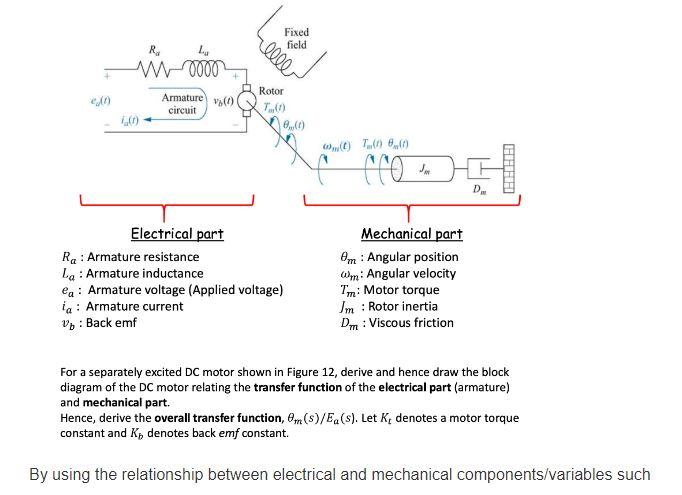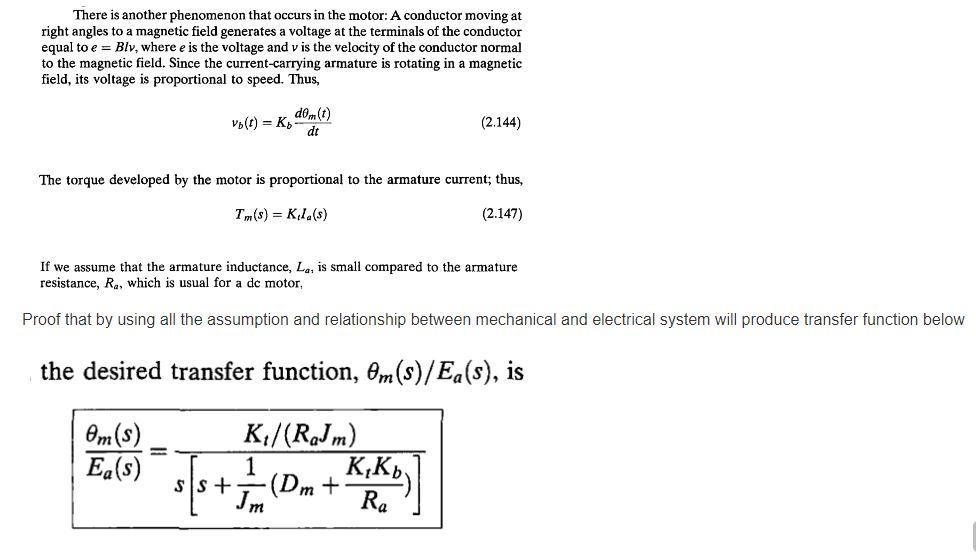Home /
Expert Answers /
Electrical Engineering /
for-a-separately-excited-dc-motor-shown-in-figure-12-derive-and-hence-draw-the-block-diagram-of-t-pa205
(Solved): For a separately excited DC motor shown in Figure 12, derive and hence draw the block diagram of t ...
For a separately excited DC motor shown in Figure 12, derive and hence draw the block diagram of the DC motor relating the transfer function of the electrical part (armature) and mechanical part. Hence, derive the overall transfer function, \( \theta_{m}(s) / E_{a}(s) \). Let \( K_{t} \) denotes a motor torque constant and \( K_{b} \) denotes back emf constant. y using the relationship between electrical and mechanical components/variables such
There is another phenomenon that occurs in the motor: A conductor moving at right angles to a magnetic field generates a voltage at the terminals of the conductor equal to \( e=B l v \), where \( e \) is the voltage and \( v \) is the velocity of the conductor normal to the magnetic field. Since the current-carrying field, its voltage is proportional to speed. Thus, \[ v_{b}(t)=K_{b} \frac{d \theta_{m}(t)}{d t} \] The torque developed by the motor is proportional to the armature current; thus, \[ T_{m}(s)=K_{t} I_{a}(s) \] If we assume that the armature inductance, \( L_{a} \), is small compared to the armature resistance, \( R_{a} \), which is usual for a dc motor, Proof that by using all the assumption and relationship between mechanical and electrical system will produce transfer function below the desired transfer function, \( \theta_{m}(s) / E_{a}(s) \), is \[ \frac{\theta_{m}(s)}{E_{a}(s)}=\frac{K_{t} /\left(R_{a} J_{m}\right)}{s\left[s+\frac{1}{J_{m}}\left(D_{m}+\frac{K_{t} K_{b}}{R_{a}}\right)\right]} \]
Expert Answer
A step-by-step explanation is given below to find the transfer functi

